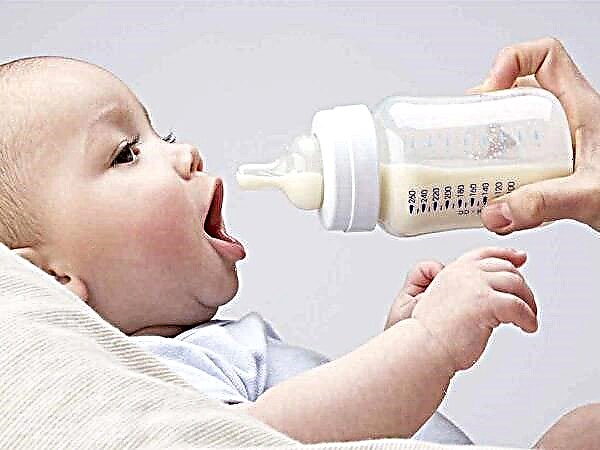
Dental hypoplasia, according to dentists, is a developmental defect in which the formation of hard tooth tissues is disrupted. Most often, this problem affects the enamel. The disease may be both hereditary and acquired, and the severity of the damage to the teeth ranges from slight minor changes to the complete absence of the surface layer of the crowns.

Causes
The appearance of hypoplasia is often caused by metabolic disorders, in particular, the metabolism of proteins and minerals. Depending on the time when these disorders occur, hypoplasia of milk and permanent teeth is isolated.
Poor development of milk teeth is associated with problems during pregnancy, for example, if the expectant mother suffered toxoplasmosis or rubella during gestation, she had severe toxicosis or Rh-conflict. In addition, milk teeth are also affected by somatic diseases that develop in an infant soon after birth.

Hereditary hypoplasia is distinguished, the cause of which is a pathological gene mutation. The disease is transmitted in both the dominant and recessive modes, as well as along with the X chromosome. In addition, underdevelopment of teeth occurs when calcification is disturbed, which is also inherited from parents to children. Development problems in permanent teeth are more common. They appear in children with various diseases. A negative impact can be exerted by:
- various pathologies of the digestive system;
- acute infections, including intestinal;
- disorders of the brain;
- vitamin D deficiency and rickets;
- alimentary dystrophy.
If the impact of such pathologies is between the ages of 6 and 18 months (for example, at 1 year), when permanent teeth are formed and mineralized, then this will most likely lead to hypoplasia. The age of the child in which the disease develops will determine the localization of the pathology, and the severity of tooth damage depends on the severity of the disease.


Classification
The enamel hypoplasia arising in children is divided into systemic and local. In the systemic form, the following symptoms occur.
- Discoloration of teeth... With this pathology, the enamel is the least affected, therefore this type of hypoplasia does not cause unpleasant sensations. On the vestibular surfaces of the child's teeth, spots are found with clear boundaries. Unlike caries, which at the initial stage has similar manifestations, after treatment with dyes, such spots do not stain. They are usually white in color, less often a yellow tint. The defeat of the teeth of the same name, as a rule, is the same, that is, the teeth are damaged in pairs, and the spots on them will be of the same size.
- Underdevelopment of the enamel. This form of hypoplasia has different manifestations. In some children, the enamel becomes wavy, in others - with grooves, in others - with dotted depressions. At first, the dots, grooves and grooves are colorless, but gradually they darken due to the accumulation of pigment.
- Enamel aplasia. This is the rarest pathology in which the surface tissues of the tooth are completely absent in some areas. Children with this form complain of pain resulting from the action of chemicals and temperature factors on the teeth. Uncomfortable and painful sensations prevent babies not only from eating, but also from carrying out daily hygienic cleaning of their teeth.

Hutchison's teeth are a separate anomaly. Previously, such changes, when the shape of the central upper incisors changes (they resemble barrels, since such teeth are wider in the neck area) and a semicircular notch appears on the cutting edges, were attributed to symptoms of congenital syphilis. Now doctors know that such changes occur not only due to infection with pale treponema.
If there are no lunar notches on the incisors, such changes are called Fournier's teeth. If the first molars are affected, then Pfluger's teeth are diagnosed. With this anomaly in the area of the neck, the crowns are expanded, and the occlusal surface is less developed and smaller.
If the child has injured the rudiments of the teeth or an inflammatory process has begun, this leads to local hypoplasia.
Most often, this problem looks like white-yellow spots and depressions that are found on any dental surface. The most common local changes are in the permanent small molars called premolars. The reason is that their buds are located between the roots of milk molars, which are often affected by caries.

Effect of tetracycline
Doctors have long noted the negative effects of tetracycline antibiotics on tooth enamel, therefore such drugs are contraindicated in pregnant women and children under 8 years of age. If an expectant mother or small child takes tetracyclines during the period of tooth formation or mineralization, this will lead to permanent violations. Due to the ability to be deposited in tooth germs, such antibacterial agents can not only change the color of the enamel, but also provoke severe forms of hypoplasia.
If a woman is treated with tetracycline drugs while waiting for the baby, this will lead to staining of the baby's milk teeth. The color will change from the incisors and the chewing surfaces of the molars. Changes usually affect one third of the crowns. If tetracyclines are used in the treatment of children after birth, the color of the permanent teeth will change. In this case, the color will change in the part that is laid during the period of use of the medicine.
The enamel shade and its intensity are influenced by the type of antibiotic and its dosage.
Most often the teeth turn yellow. If you shine ultraviolet light on them, there will be a noticeable glow, which allows you to distinguish "tetracycline teeth" from changes provoked by other health problems, for example, increased bilirubin levels. Thus, the diagnosis is confirmed by examining the enamel in ultraviolet light.

Diagnostics
It is quite simple to reveal the underdevelopment of the enamel layer of the teeth, because it is visible with the naked eye. During the examination, the doctor will see spots, grooves, waves, dots or other changes on the anterior or other surface of the crowns. To make a diagnosis, it is important to distinguish such manifestations from superficial and initial caries:
- if the crumbs have caries, then the speck is usually single, its localization is near the neck of the tooth, and in the case of hypoplasia, the spots are often multiple and are detected in any parts of the crown;
- if the surface is treated with a solution of methylene blue, then carious lesions will change color, but hypoplastic ones will not;
- if a carious lesion is probed, the instrument will cling to roughness, and in children with hypoplasia, the enamel will remain smooth, even if the disease is severe.

Treatment
When a child has single spots that do not bother him, no treatment is required. If the changes are serious, and the tooth tissues have begun to deteriorate, then the intervention of the dentist is mandatory. In the absence of proper therapy, severe hypoplasia can result in complete loss of damaged teeth and bite problems. In addition, thinned areas are less protected from microbes and other harmful influences.
At the stage of stains, doctors perform bleaching, and for grooves and dents, they grind the surface. One of the most common treatment methods is dental fillings. It is most in demand if the child has pinpoint depressions, small grooves or stripes. The teeth are cleaned of deposits, their surface is leveled using a bur, then the enamel is etched and treated with a special adhesive, after which a filling is installed.
In case of pronounced changes, the child should be taken to an orthopedic dentist, who will determine the need for crowns or veneers. To improve the condition of the enamel, young patients are also additionally prescribed special preparations for remineralization.

Prevention
In order to prevent violations of enamel development, doctors advise timely prevention of diseases that can affect the tooth rudiments. Women should pay enough attention to their health when planning pregnancy and carrying a fetus. The main tasks during this period are to prevent hypovitaminosis, to protect yourself from viral diseases, to exclude self-medication, to treat all teeth before conception.
When the baby was born, the nursing mother needs eat a variety of foods, so that, together with milk, the baby gets into the body enough vitamins D, C, B, A, calcium, fluoride and other minerals. In addition, breastfeeding will provide the infant with protection from infectious agents. As soon as the baby has its first teeth, enough attention should be paid to oral hygiene. First, the enamel is cleaned every day with a silicone fingertip or special napkins. A little later, they begin to use brushes with soft bristles and pastes that do not contain fluoride.
Parents of an older child also need to monitor his diet and regularly visit the dentist with a tiny bit in order to notice caries in time and cure it, preventing the spread of the infection deeper. It is important to periodically examine all the child's teeth and, if any alarming changes appear, immediately consult a specialist.




